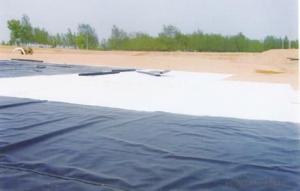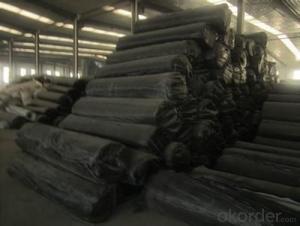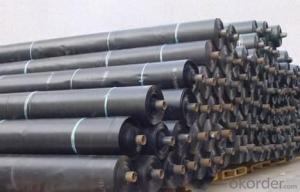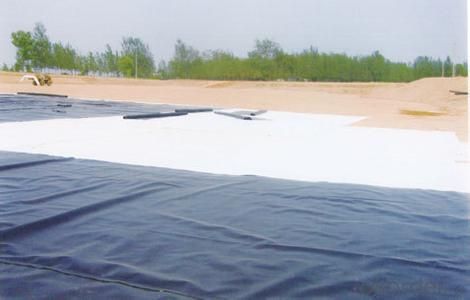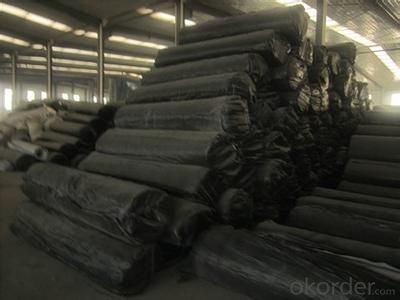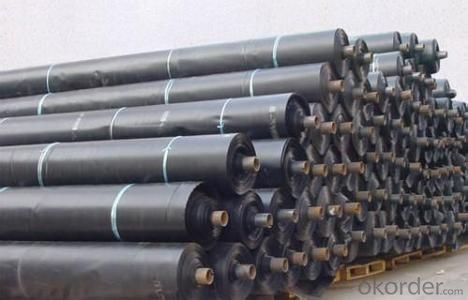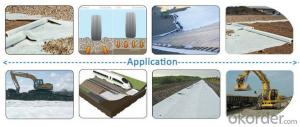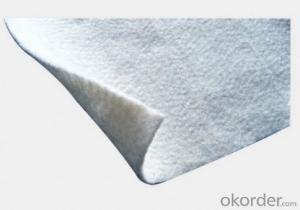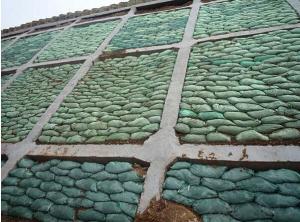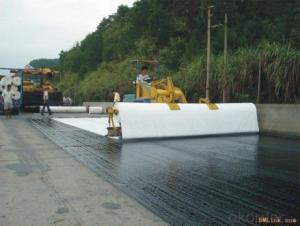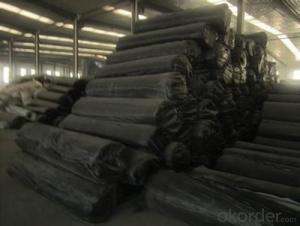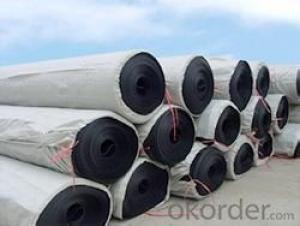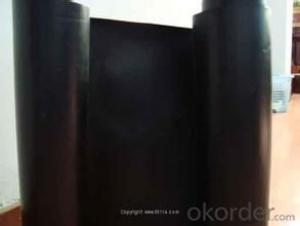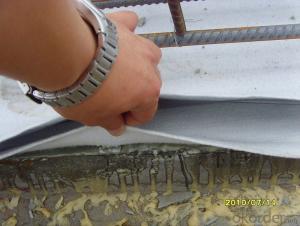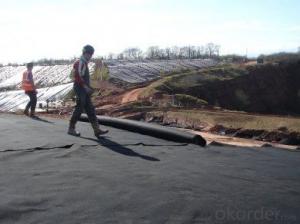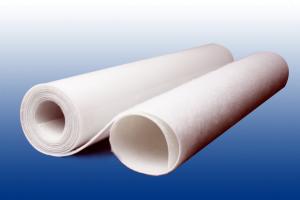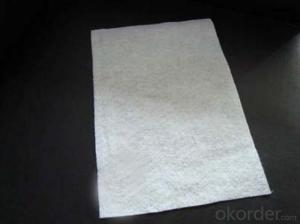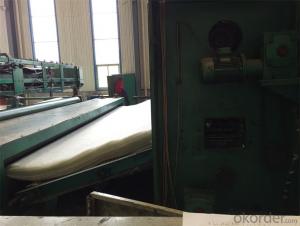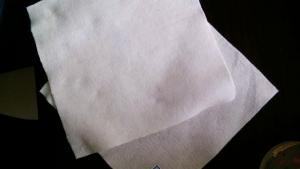Industrial Geotextile Fabric - Geotextiles Anti-Grass Cloth BT20-15
- Loading Port:
- China Main Port
- Payment Terms:
- TT or LC
- Min Order Qty:
- -
- Supply Capability:
- -
OKorder Service Pledge
OKorder Financial Service
You Might Also Like
1.Product Description:
The anti-grass cloth is a kind of vertical and horizontal weaving plastic woven cloth,
It has good quality of permeability,water seepage and Prevention and control of
weeds.Widely used in gardening and agriculture.Most areas in order to control weeds
and prevent the plant roots drill ground Commonly used blow molding of the PE film
as grass cloth.Because of thePE film is transparent,sunlight an through the PE film
sunlight to PE membrane under the weeds,weeds can for photosynthesis, not prevent
weed growth.And the PE film sealing good, poor permeability, water penetration ability is
insufficient, make the plant roots absorbing water ability is insufficient, affect plant growth,
increased permeability is low geothermal could lead to a plant's root rot
2.Product Characteristic:
1.Prevent leakage disposal in landfill or waste water or waste dregs disposing field.
2.River bank ,lake dam ,mine remainings ,resevoir ,tunnel ,liquid storage pool(pit ,mine)
3.Preventing leakage in subway ,basement ,tunnel ,hole .
4.Anti-salt leakage in roadbed and other ground sill.
5.The plane direction laying of dam ,the vertical direction laying for ground sill.used in the
construction fence and waste material field.
6.Used in ground sill of road ,highway ,railway and waterproof layer of welling clay and wet
collapsed loess.
7.Preventing leakage on rooftop.
3.Specifications:
material:pp
.length :50-100m
width:1-8m
BT20-15 BT30-22 BT40-28 BT50-35 BT60-42
Type: Geotextiles
Place of Origin: Shandong, China (Mainland)
Geotextile Type: Woven Geotextiles
Color: black
4.Reference Picture
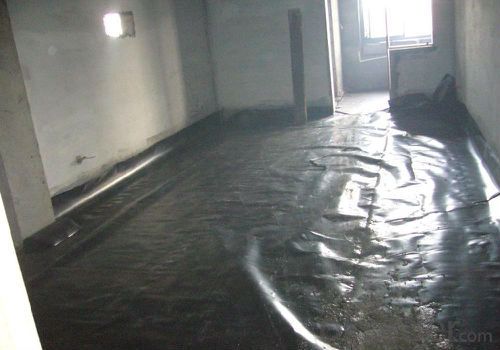
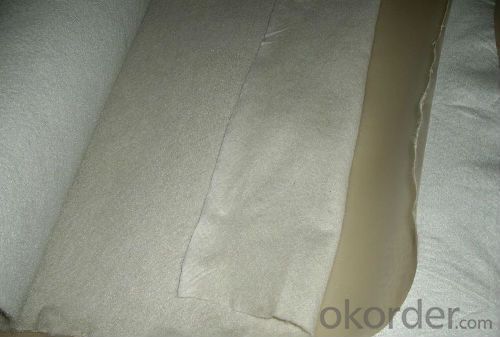
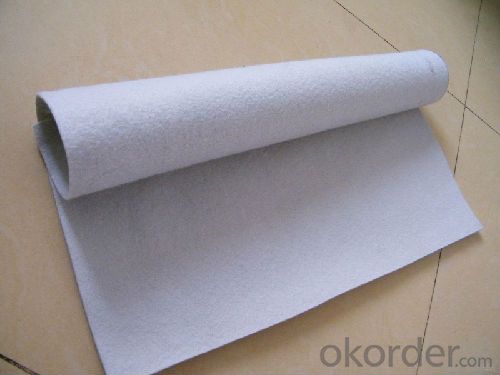
- Q: Are geotextiles effective in preventing soil contamination?
- Yes, geotextiles are effective in preventing soil contamination. They act as a barrier between the soil and potential contaminants, such as chemicals or pollutants, preventing them from leaching into the soil. Geotextiles also help in stabilizing the soil, reducing erosion, and promoting proper drainage. Overall, they play a crucial role in protecting soil quality and preventing contamination.
- Q: What are the key properties of geotextiles?
- Geotextiles are permeable fabrics that are used in various civil engineering applications. The key properties of geotextiles include their ability to provide filtration, separation, reinforcement, and drainage. They are durable, resistant to biological and chemical degradation, and have high tensile strength. Geotextiles also offer good water permeability, allowing for effective water flow while preventing soil erosion.
- Q: Will you master knitting reinforced geotextile H and reinforced geotextile What is the difference? In addition, how to distinguish between spunbond and weaving in reinforced geotextiles? More
- Texture and material ratio is different ah.
- Q: Are geotextiles suitable for use in drainage ditches?
- Yes, geotextiles are suitable for use in drainage ditches. Geotextiles can be used as a filtration and separation layer in drainage systems to prevent soil erosion and clogging while allowing water to flow through. They help improve the overall performance and longevity of drainage ditches by enhancing their filtration and drainage capabilities.
- Q: Can geotextiles be used for reinforcement of railway tracks?
- Yes, geotextiles can be used for reinforcement of railway tracks. Geotextiles are commonly used in railway engineering to improve track stability, reduce settlement, and increase load-bearing capacity. They are placed beneath the track ballast to distribute loads more evenly, prevent ballast contamination, and provide separation and filtration functions. Geotextiles can effectively enhance the performance and longevity of railway tracks.
- Q: SNG400-3.5 geotextile is what model
- SNG400-3.5 refers to the national standard polyester staple acupuncture non-woven geotextile 400g / ㎡, width 3.5m. The index code for staple acupuncture nonwoven geotextiles is generally SNG / (1) (2) / (3) - (4) / (5). (1) that the use of raw materials fiber code: PET-polyester, PP-polypropylene, PA-nylon, PV-vinylon, PE-Ethylene (conventional polyester are generally vacant omitted code) (2) that polyester staple fiber non-woven Geotextile per unit area weight. (3) that the composite products in the polyester staple fiber non-woven geotextile weight per unit area, non-composite product vacancies. (4) width, expressed in meters (5) production department number: can express the product more specific characteristics, functions, varieties, sequences, etc., the general vacancy. For example, a 3.5m wide 400g / ㎡ polyester staple fiber nonwoven geotextile representation can be SNG / PET400-3.5, can also be expressed as SNG400-3.5
- Q: Designers give blind ditch length of 540m, geotextile for 2835m2 more
- Too professional. You ask the manufacturers, music built
- Q: Can geotextiles be used for drainage purposes?
- Yes, geotextiles can be used for drainage purposes. They are often used to enhance the drainage capacity of soil by allowing water to flow through while preventing soil erosion. Geotextiles can be employed in various applications such as road construction, landfills, and agricultural fields to improve drainage and prevent waterlogging.
- Q: What is geotextile? Geotextile is what
- Geotextile, also known as geotextile, it is made of synthetic fiber through acupuncture or woven from the permeability of geosynthetics. Finished cloth for the cloth, the general width of 4-6 meters, the length of 50-100 meters. Geotextile is divided into a woven geotextile and non-woven geotextile. Geotextile has excellent filtration, drainage, isolation, reinforcement, anti-seepage, protection, with light weight, high tensile strength, good permeability, high temperature, anti-freeze, anti-aging, corrosion resistance characteristics. Geotextile is one of the geosynthetics, the application of geosynthetics originated in the fifties of the twentieth century, the domestic geotextile is one of the national eight five plan, China promulgated in 1998, "geosynthetics staple fiber Acupuncture non-woven geotextile "(GB / T-1998) standard, the current geotextile has been widely used in many areas.
- Q: Can the geotextile of the filter layer be constructed?
- Hello, you can construction, I am specializing in the production of geosuction impermeable materials, a professional welding construction team, the most cost-effective, wish smooth
Send your message to us
Industrial Geotextile Fabric - Geotextiles Anti-Grass Cloth BT20-15
- Loading Port:
- China Main Port
- Payment Terms:
- TT or LC
- Min Order Qty:
- -
- Supply Capability:
- -
OKorder Service Pledge
OKorder Financial Service
Similar products
Hot products
Hot Searches
Related keywords
